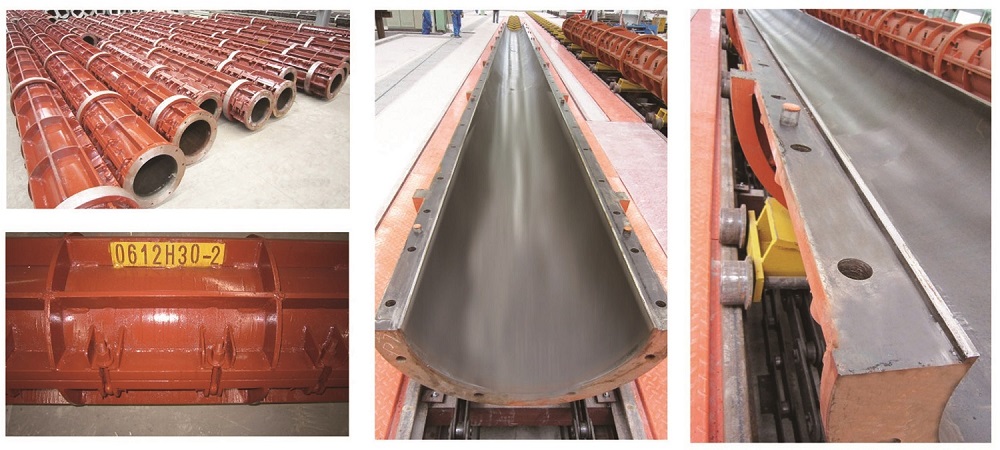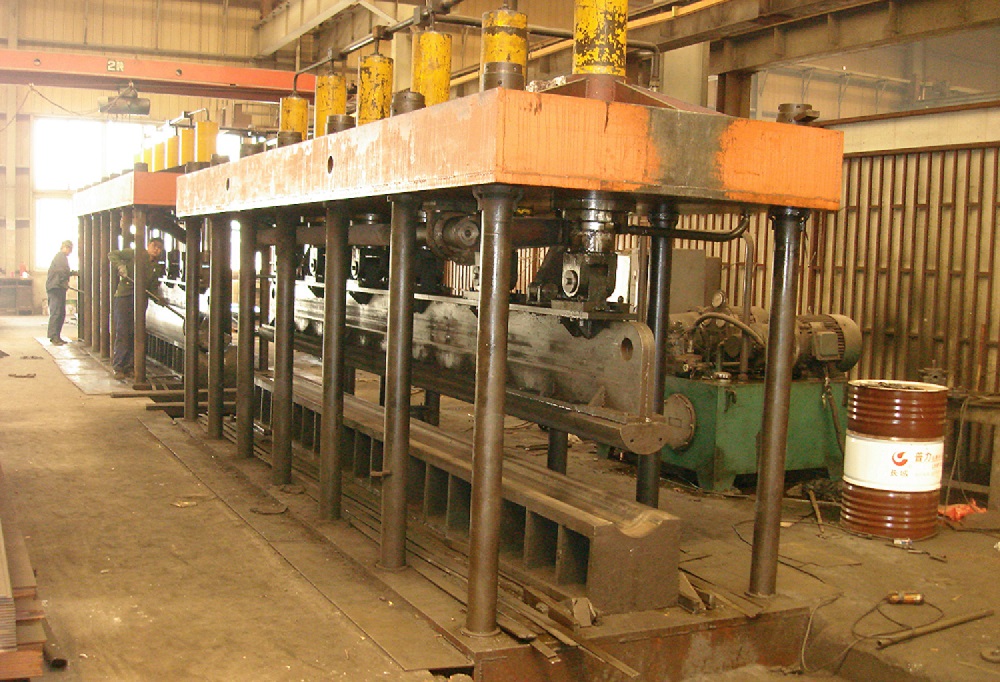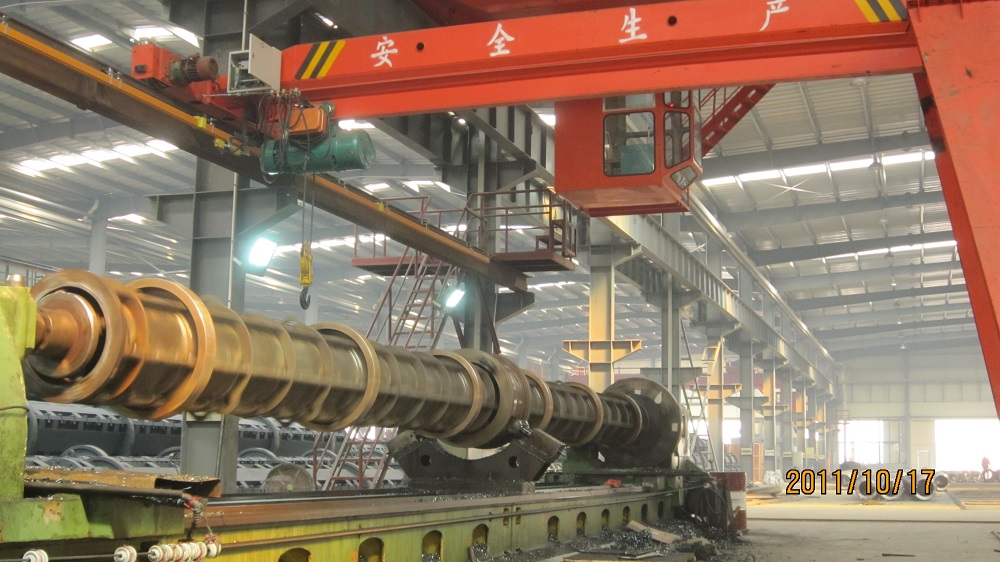Lead zinc ore beneficiation
Separation and enrichment of lead and zinc minerals from lead-containing zinc ores. The ore dressing products are lead concentrate and zinc concentrate, or lead-zinc mixed concentrate.
Zinc ore minerals and natural resources output from Pb, Zn, other metals (such as pyrite, pyrrhotite, yellow copper ore, etc.) and gangue minerals. Gangue minerals are mainly calcite, quartz, dolomite, sericite, fluorite, and barite. Lead-zinc ore is often associated with cadmium , antimony , bismuth , indium , gallium, and gold and silver . Lead-zinc ore is divided into sulfide ore and oxidized ore according to the degree of oxidation; the oxidation rate is 10% to 30% for mixed ore, less than 10% for sulfide ore, and more than 30% for oxidized ore. The type of lead-zinc ore is mainly sulfide ore, and there are few ore oxides. Therefore, most of the lead and zinc metals produced in the world come from sulfide ore, and a small part is extracted from oxidized ore.
The world's lead and zinc resources are abundant and widely distributed. Lead reserves are ranked first in the United States, followed by Australia, Russia and Canada; zinc reserves are the largest in Canada, followed by Australia, the United States, and South Africa. Lead ore mining is the highest in the former Soviet Union; zinc ore mining is the largest in Canada. China's lead and zinc resources are abundant, mainly distributed in Yunnan, Gansu, Shaanxi, Jiangxi, Guangdong, Hunan, Sichuan, Guangxi, Qinghai and Inner Mongolia. China's lead-zinc ore grade is low, and complex symbiosis is difficult to select ore. The deposit types mainly include skarn-type lead-zinc deposit, hydrothermal vein-like lead-zinc deposit, pyrite-type lead-zinc deposit, hydrothermal metasomatic lead-zinc deposit in carbonate rock layer, and carbonate-like layered lead-zinc deposit. 5 kinds. Lead minerals and zinc minerals often symbiotically form polymetallic deposits. There are 144 kinds of lead minerals and 58 kinds of zinc minerals; there are six kinds of lead minerals used in industry and seven kinds of zinc minerals. (See table) The lead and zinc minerals that have been utilized are mainly galena and sphalerite.

The separation of lead-zinc ore in the beneficiation process is mainly based on flotation, and the combined process of re-election and smelting can also be used. Due to the uneven grain size of the various minerals in the lead-zinc ore, the ore with different mineralization (see mineral size) should have a corresponding grinding and flotation process.
The process of sorting flotation of lead-zinc ore by lead-zinc ore is: (1) Priority flotation process (Figure 1). China's lead and zinc mines apply this

Figure 1 shows the priority flotation process. (2) Partial hybrid flotation process (Figure 2). There are also many applications in China. (3) Full hybrid flotation process (Figure 3). (4) Pre-selection of lead and zinc in heavy medium

Figure 2 Partial hybrid flotation process
Secondary priority flotation process. (5) Heavy medium pre-selection-flotation-re-election combined process: for ores containing lead, zinc, sulfur and tin , pre-selection by heavy medium beneficiation method, discarding about 35% of waste rock; flotation adopts stage grinding, stage In the process of sorting, lead and zinc concentrates are selected in turn; after the iron ore is selected by flotation of zinc tailings, the tin concentrate is selected by turning the bed. (6) Waiting for the floatable flotation process, the minerals to be recycled are divided into two parts: easy floating and difficult to float according to the principle of equality of floatability, respectively, mixed flotation, to obtain mixed concentrate, and then separate various useful A separate concentrate of minerals. (7) Asynchronous hybrid flotation process. In the whole process of lead-zinc mixed flotation, artificially control the pH of the pulp, the inhibition and activation conditions, the strength of the collector, and other factors to ensure that the lead and zinc minerals are not synchronized under their respective suitable flotation conditions. Fully exert its unique floatation, so that high beneficiation indicators can be obtained.

Figure 3 Full hybrid flotation process
The separation of mixed lead-zinc ore uses a preferential flotation process in which lead sulfide, lead oxide, zinc sulfide, and zinc oxide are sequentially separated. Lead oxide and zinc oxide are usually vulcanized with a vulcanizing agent prior to flotation and then floated.
Commonly used methods for the treatment of lead-zinc ore are: (1) first vulcanization with a vulcanizing agent, followed by flotation of lead oxide with xanthate, flotation of zinc oxide with an amine; (2) vulcanization with steam, followed by copper sulfate Activation, and finally the use of xanthate to capture zinc oxide minerals; (3) For the lead-zinc ore that is not suitable for flotation, the heavy medium can be selected by the Welz method-empire smelting method.
Typical lead-zinc ore dressing plant
Fankou Lead-Zinc Mine Concentrator is located in Renhua County, Guangdong Province, China. It was put into operation in 1968. In 1991, the production scale was 4000t/d. The ore from the concentrator is from a “deposited-reformed†layer-controlled deposit, and the ore is a dense massive primary sulfide ore. Valuable minerals mainly include galena, sphalerite, and pyrite. The gangue is mainly quartz, calcite, dolomite, etc. Silver minerals include silver beryllium copper and deep red silver ore. Silver, lead, zinc minerals and sulfur minerals are dominated by fine-grained inlays. The minerals are very closely combined. The ore contains lead, zinc, sulfur, silver and iron in the range of 4% to 5%, 9% to 11%, 22% to 25%, 95 to 110 g/t, and 19% to 21%, respectively. The crushing uses a three-stage and one-closed process. There are two series of grinding and flotation processes. One series uses high alkalinity and butyl yellow drug priority flotation process to produce lead, zinc and pyrite concentrates; lead concentrate grade 50%, zinc concentrate grade 51% ~ 53% i sulfur concentrate grade 43% ~ 46%, lead, zinc, sulfur recovery rate of 81%, 83%, 91% ~ 93% and 43% ~ 47%; another series is asynchronous mixing float The selection process was adopted in 1987-1991 to produce lead-zinc mixed concentrate and sulfur concentrate. The flotation reagent used lime, copper sulfate, aniline black medicine, butyl xanthate and pine oil, and lead-zinc mixed concentrate grade 55 %, containing 320g/t of silver, the recovery rates of lead, zinc and silver are 89%-90%, 97.75% and 88.23%, respectively. At the end of 1992, both series were changed to the priority flotation process. The plant also uses advanced detection instruments such as the Curry Van Current Carrying Analyzer, the PSM-400 Particle Size Analyzer and the Edwell Density Meter. The advanced intelligent industrial control system (I/A system) was introduced in the late 1980s and was automatically controlled in a grinding system.
The Huangshaping Lead-Zinc Mine Concentrator is located in Guiyang County, Hunan Province, China. It was put into operation in 1967 with a production scale of 2000t/d. The concentrator fills and metabolizes the deposit with hydrothermal fissures in the original carbonate carbonate formation. The ore is mainly composed of dense blocks, which are inhomogeneously intercalated with medium and fine particles, and the minerals are closely symbiotic. The main valuable metal minerals are galena, iron sphalerite, wurtzite, pyrite, chalcopyrite, etc. The gangue minerals are quartz, calcite, fluorite and the like. The crushing process of the concentrator is a three-stage and one-closed process. Flotation adopts a floatable process, and the beneficiation agent uses lime, zinc sulfate, copper sulfate, butyl xanthate, ethyl sulfide, and pine oil. In 1991, the ore dressing production index was: lead grade of lead ore 3.13.1, zinc grade 6.02%, sulfur grade 13.61%; lead concentrate grade 72.15%, zinc concentrate grade 44.60%, sulfur concentrate grade 34.85%; lead, zinc and sulfur The recovery rates were 90.88%, 91.59% and 46.88%, respectively.
The Xilin Lead-Zinc Mine Concentrator is located in Yichun City, Heilongjiang Province, China. It was put into operation in 1967 and the production scale is 1200t/d. The ore of the concentrator belongs to the high-medium temperature hot liquid filling lead-zinc deposit. There are two kinds of ores in the form of ore. Divalent metal ore minerals are mainly pyrrhotite, pyrite, sphalerite (Marmatite) and galena, tetrahedrite well as traces of silver, antimony, sulfur, copper silver, magenta silver Etc.; gangue minerals mainly include dolomite, calcite, chlorite. The crushing uses a three-stage and one-closed process. The beneficiation process uses multi-stage fine grinding, and the lead and zinc coarse concentrates are separately ground. The lead, zinc and sulfur are preferentially flotation processes. The grinding fineness is -0.074 mm, which accounts for 85% and the concentration is 43%. Lead is selected from aniline black medicine, butyl xanthate and butyl ammonium black medicine as auxiliary mixed collector; zinc is used as diesel and butyl xanthate mixed collector. The ore dressing production indicators are: raw ore lead grade 3% ~ 4%, zinc 5% ~ 6%, sulfur 17% ~ 18%, silver 70 ~ 90g / t; lead concentrate containing lead 62% ~ 67%, zinc containing 4.81% ~5.5%, silver 1230 ~ 1400g / t, lead and silver recovery rate of 91% ~ 92%, 76% ~ 80%; zinc concentrate containing zinc, lead, silver, respectively, 50%, 0.8% ~ 1.3%, From 57 to 58 g/t, the recovery rates of zinc and silver were 87% to 89% and 5.0% to 7.0%, respectively.
Qingchengzi Lead-Zinc Mine Concentrator is located in Fengcheng County, Liaoning Province, China, with a production scale of 1600t/d. The ore of the concentrator is a medium-temperature hydrothermal filling and a lead-zinc deposit. The ore is mainly in the form of blocks and nets. The main valuable metal minerals in the ore are galena, sphalerite and pyrite. The main gangue minerals are dolomite, quartz, calcite and sericite. The crushing adopts a three-stage and one-closed process, and the grinding particle size is 50% -0.074 mm. The separation process adopts lead, zinc and sulfur mixed flotation process, and the mixed coarse concentrate is re-grinded (a 0.074mm accounts for 90%). After the lead is selected, the zinc-sulfur separation. The use of sodium black medicine, ethyl sulfide nitrogen, butyl xanthate, copper sulfate and other mineral processing agents for mixed flotation, the selection of lead using potassium cyanide, zinc sulfate, lime, activated carbon and the like. The mineral processing index of the factory in 1991: 2.23% of raw ore lead, 2.20% of zinc, 7.4% of sulfur, and 65g/t of silver; lead concentrate contains 68.14% of lead, 1.93% of zinc, silver.223.:|g/t, lead The recovery rates of silver and silver were 88.81% and 70.20% respectively; the zinc concentrate contained 54.80% zinc, 0.94% lead and 90g/t silver, the recovery rates of zinc and silver were 90.31% and 5.60%, respectively; the sulfur concentrate contained 39.51%. The recovery rate was 70.47%.
Xiaotieshan Copper-Lead Zinc Concentrator is located in Baiyin City, Gansu Province, China. It was put into operation in 1980 and its production scale was 800t/d in 1991. The Xiaotieshan Mine is a pyrite-type copper-lead-zinc polymetallic complex sulfide deposit with associated gold, silver and rare elements. The ore is composed of two types: blocky and disseminated. The main valuable metal minerals in the ore are pyrite, sphalerite, galena, chalcopyrite, copper blue and chalcopyrite. The main gangue minerals are quartz, sericite, chlorite, etc. Silver and gold mines, gold and silver mines, natural gold and natural silver. Broken into a three-stage and one-closed process. The separation process adopts the first copper, lead, zinc and sulfur mixed flotation and post-separation process; after the coarse concentrate is re-milled, the separation of sulfur from copper, lead and zinc is carried out; after the coarse selection of copper, lead and zinc foam is concentrated and dehydrated Re-grinding, adding sodium sulfide, sulfite, copper, lead and zinc, and finally obtaining copper concentrate, lead-zinc mixed concentrate and sulfur concentrate. In 1991, the ore dressing production indicators were: original ore copper grade o.80 wild, lead 1.97%, zinc 3.62%, sulfur 7.26%, gold o.86g/t, silver 62g/t; copper concentrate containing 17.82% copper, copper recovery 21.66%; lead-zinc mixed concentrate contains lead 13.01%, zinc 27.1%, lead and zinc recovery rates are 75.59%, 85.76%; gold and silver in copper and lead-zinc mixed concentrates are 60.43% and 74.90%.
The Chaihe Lead-Zinc Mine Concentrator is located in Kaiyuan County, Liaoning Province, China, with a production scale of 1000t/d. The ore is a medium-low temperature hydrothermal metasomatic deposit. The main valuable metal minerals in the ore are galena, sphalerite, pyrite, followed by leucite, smithsonite, lead bismuth, heteropolar ore, etc. Minerals mainly include calcite, dolomite, and quartz. Broken into a three-stage and one-closed process. The separation process uses lead sulfide, lead oxide, zinc sulfide, and zinc oxide to preferentially select the flotation process. In addition to the usual pharmaceutical processing, using the flotation of zinc oxide phosphate, sodium hexametaphosphate, sodium sulfide and mixed amines emulsion. In 1991, the ore dressing production index was: lead grade of ore 2.13%, zinc 6.36%, lead oxidation rate 32.5%, zinc oxidation rate 39.3%; lead concentrate containing lead 61.21%, zinc 5.30%, lead recovery rate 77.03%; zinc concentrate Zinc content was 47.69% and lead was 1.17%; zinc recovery was 88.71%.
The Mount Isa Lead-Zinc Mine Concentrator is located in northwest Queensland, Australia, and was commissioned in 1965. The main valuable minerals in the ore are galena, sphalerite, pyrite, etc. The gangue minerals are mainly carbonates and shale . In 1981, a heavy medium dressing workshop was built to treat the broken ore and abandon the waste rock by 30%. The plant adopts stage grinding and stage sorting process: the first stage grinding particle size is -0.074mm, accounting for 50%-60%, adding sodium cyanide to inhibit sphalerite and pyrite, adding ethyl sodium xanthate, Lead selection was carried out under the condition of pH 8.2; copper sulphate was used as activator, butyl yellow drug was used as collector of zinc blende for zinc selection; lead crude ore tailing was re-milled to -0.074 mm for 78% for second The lead is coarsely selected, and the lead ore is reground to -0.038mm, which is 95% re-selected. The lead concentrates of each section are combined and the final lead concentrate is selected once; the zinc is selected for secondary rough selection, one sweep and three selections. In 1981, its ore dressing production index was: raw ore containing 6.2% lead, zinc 6.0%, silver 155g/t, lead concentrate containing lead 47.7%~51.5%, zinc 6.9%, silver 1195g/t, lead and silver recovery rates respectively 81.5%, 80.9%; zinc concentrate contains 50.2% zinc, lead 3.0%, silver 113g/t, zinc and silver recovery rates are 66.1%, 5.8%.
The Sullivan Lead-Zinc Mine Concentrator is located in the eastern foothills of the Purcell Range in Kimberley, British Columbia, Canada, and was commissioned in 1923 with a processing capacity of 10,000 t/d. The main valuable minerals in the ore are galena, iron sphalerite, pyrrhotite and pyrite, accompanied by silver, tin, antimony and cadmium. The plant uses a heavy medium pre-selection-flotation-re-election process to produce lead concentrates, zinc concentrates, sulfur concentrates and tin concentrates. Copper sulphate is also produced. Heavy medium waste disposal accounts for 36% of the original ore volume, heavy products are ground to -0.074mm, accounting for 54% of the lead, and the tailings are used for the second stage of grinding, then lead (rough selection, sweeping), and then zinc. The zinc concentrate is re-grinded and refined. The zinc tailings are selected by a five-layer automatic turning bed and desulphurized by flotation. The ore dressing production indicators are: raw ore containing 4.74% lead, zinc 4.34%, silver 50.39g/t; lead concentrate containing lead 63.42%, silver 608g/t; zinc concentrate containing zinc 48.63%, silver 86.16g/t; lead, The total recovery rates of zinc and silver were 91.96%, 93.13% and 86.77%, respectively.
Concrete Pile Mould is a kind of Steel Mould, it is mainly apply to Concrete Pile Plant to produce Concrete Pile including Centrifugal Reinforced Technology (PHC ) Concrete Spun Pile, Concrete Hollow Square Pile, U sheet Pile for river bank piling etc.
Our Mould Advantages:
1. Mould's tongue-and-groove is designed by the dislocation of upper and lower shell boards, matchboard is plane surface. Slurry does not leak and it is easy to clean mould.
2. The tyre is "T" type forgings. Tyre and its support plate are as whole.

3. Self-developed six-meter press machine of mould inside shell. The inside shell seam extends from 2 meters to 6 meters, to minimize welds and mould strength and improve the external appearance of the products

4. Welding process uses CO2 arc shield welder which makes its appearance simple and weld seam neat. Our company cooperated with colleges to introduce [robot welding project".
5. Long lathe, manufacture the whole set mould under fifteen-meter length, greatly increases concentricity of the tyre and flange.

We can customize for you. If you have any questions, please contact with us directly. Concrete Pile Moulds are produced by High Quality and Esay transportation, quick assembling, good rigidity and smooth working. Welcome you can visit our Factory.For inqury,Please send mail directly to us.
Concrete Pile Mould
Steel Mould,Concrete Spun Pile Mould,Concrete Square Pile,Prestressed Concrete Pile Mould
Jiangsu Haiheng Building-Materials Machinery Co.,Ltd , https://www.jshaiheng.com